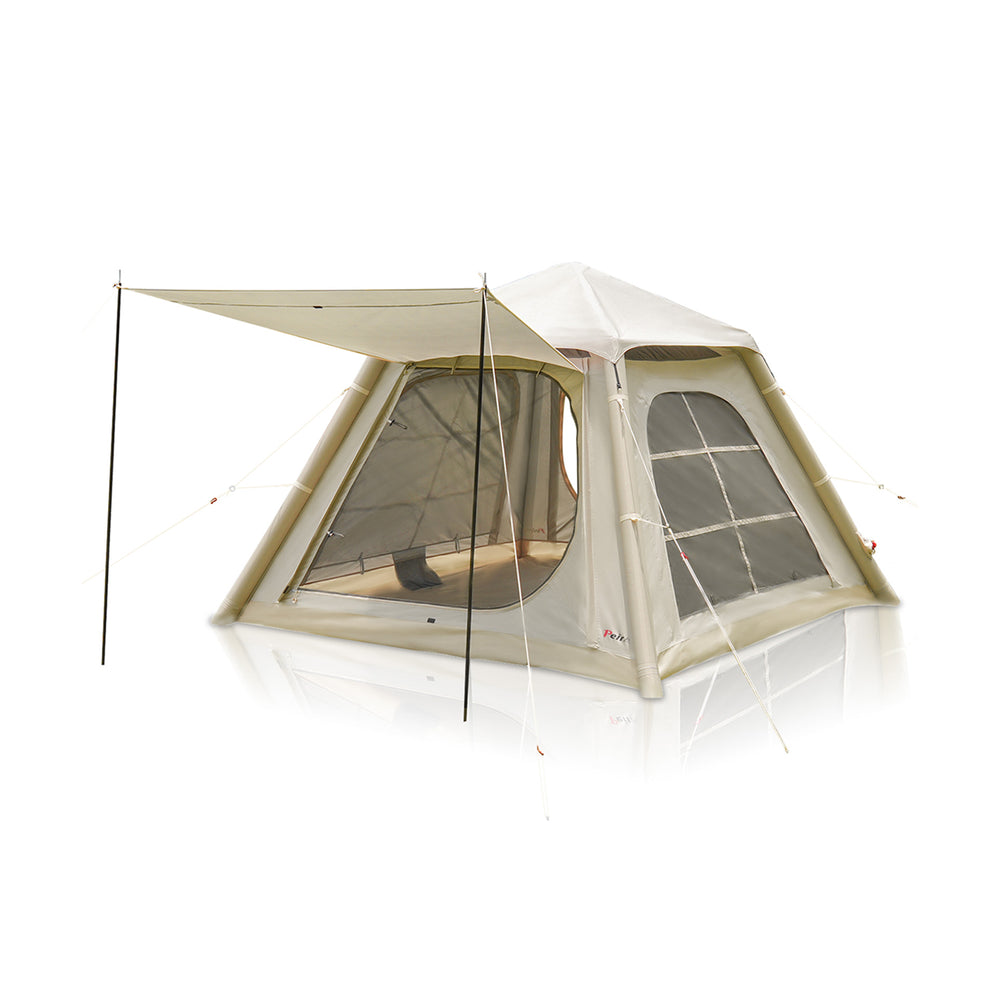Washing your sleeping bag is essential to maintaining its cleanliness and longevity. If you've used your sleeping bag on a camping trip or during an outdoor adventure, knowing how to wash it properly can ensure it stays in good condition. With proper care, your sleeping bag will keep you warm and comfortable on every trip.
Many people wonder how to wash a sleeping bag without damaging its insulation or fabric. It's important to follow the right steps to avoid ruining the material and to keep the bag fresh. In this guide, we'll show you how to clean your sleeping bag so you can enjoy your outdoor adventures. Let's dive in.
How to Hand Wash a Sleeping Bag
Hand washing a sleeping bag is a gentle and effective method to clean it without causing damage. Follow these steps to ensure your sleeping bag stays in excellent condition:
Prepare the Area
Fill a large bathtub or a clean basin with lukewarm water. Avoid using hot water as it can damage the fabric and insulation. Ensure the tub or basin is clean to prevent dirt or debris from entering your sleeping bag.
Add Detergent
Use a mild, non-detergent soap or a specialized sleeping bag cleaner. Regular laundry detergents can strip natural oils from the fabric and insulation. Add the recommended amount of cleaner to the water. Mix it well to ensure even distribution before adding the sleeping bag.
Submerge the Sleeping Bag
Fully submerge the sleeping bag in the water. Gently agitate it with your hands to ensure the soap is evenly distributed. Gently scrub any particularly dirty areas, focusing on them to loosen any embedded dirt and oils.
Soak
Let the sleeping bag soak for about 30 minutes. This allows the detergent to break down dirt and oils effectively. Avoid agitating the sleeping bag too much during the soak to prevent damage to the insulation and fabric.
Rinse Thoroughly
Drain the soapy water and refill the tub or basin with clean water. Rinse the sleeping bag thoroughly to remove all soap residue. You may need to rinse it several times to ensure all the detergent is gone. Clearwater indicates thorough rinsing.
Gently Squeeze Out the Water
Do not wring or twist the sleeping bag, as this can damage the insulation. Instead, press down gently to remove excess water. Start from one end and work your way to the other to evenly distribute pressure and avoid clumping.
Dry Properly
Lay the sleeping bag flat on a clean, dry towel. Roll it up to absorb more water, then unroll and lay it out flat in a shaded area to air dry. Avoid direct sunlight, which can degrade the fabric and insulation. Periodically fluff the bag to maintain even drying and prevent clumping.
Using these steps, you can effectively hand wash your sleeping bag, maintaining its quality and ensuring it remains reliable.
How to Dry Your Sleeping Bag
Properly drying your sleeping bag is crucial for maintaining its insulation and quality. After washing, gently squeeze out excess water without wringing. Lay the sleeping bag on a clean, dry towel and roll it up to absorb more water. Repeat with additional dry towels if needed.
If the care label says to put the sleeping bag in a large, front-loading tumble dryer on low or no heat, add clean tennis balls or dryer balls to help fluff the insulation. Check periodically to ensure even drying. For air drying, lay the sleeping bag flat in a shaded, well-ventilated area.
Avoid direct sunlight, as UV rays can degrade the fabric and insulation. Flip the bag occasionally to ensure thorough drying. Gently shake and massage the bag to break up any clumps. Before storing the sleeping bag, make sure it is completely dry to prevent mold and mildew. Store in a large, breathable sack to maintain its loft and longevity.
How to Machine-Wash a Sleeping Bag
Machine-washing a sleeping bag can be convenient and effective if done correctly. Follow these steps to ensure your sleeping bag stays in great condition:
Check the Care Label
Always check the care label on your sleeping bag for specific washing instructions. Some bags may require hand washing or professional cleaning. Follow the manufacturer's guidelines to avoid damaging your sleeping bag.
Use a Front-Loading Washer
Opt for a large, front-loading washing machine. Top-loading machines with an agitator can damage the sleeping bag's insulation and fabric. Ensure the washer is clean before use to prevent any dirt or debris from transferring onto your sleeping bag.
Select a Gentle Cycle
Choose a gentle cycle with cold or warm water. Hot water can damage the insulation and fabric. Add a mild, non-detergent soap or a specialized sleeping bag cleaner to the washer. Fabric softeners, bleach, and regular laundry detergents can harm the sleeping bag's materials.
Add Extra Rinse Cycle
To ensure all detergent is removed, add an extra rinse cycle. Residual soap can degrade the insulation and affect the sleeping bag's performance. Check the machine periodically to make sure the bag is not getting twisted or bunched up.
Remove Excess Water Gently
After washing, gently squeeze out excess water without wringing or twisting. Use the spin cycle to remove most of the water, but don't overdo it, as too much spinning can damage the insulation.
Dry the Sleeping Bag
Follow the drying instructions as mentioned in the "How to Dry Your Sleeping Bag" section. Fluff up the insulation with clean tennis balls or dryer balls in a large, front-loading tumble dryer. Alternately, air dry the sleeping bag in a shaded, well-ventilated spot, flipping it occasionally.
FAQs
Should you wash a sleeping bag zipped or unzipped?
You should wash a sleeping bag unzipped. It allows water and detergent to circulate more freely, ensuring a thorough cleaning. It also prevents the zipper from getting damaged or stuck. Unzipping the bag helps maintain its shape and functionality during the wash.
Can you tumble-dry a sleeping bag?
Yes, you can tumble-dry a sleeping bag. Use a large, front-loading dryer on a low or no-heat setting. Add clean tennis balls or dryer balls to help fluff the insulation. Check periodically to avoid overheating and ensure even drying.
Should you wash a sleeping bag inside out?
Yes, it is recommended to wash a sleeping bag inside out. This helps clean the interior, where most dirt and oils accumulate. It also protects the outer fabric and any water-repellent coatings. Turning the bag inside out ensures a more effective and gentle wash.
How long do sleeping bags last?
A sleeping bag typically lasts 5 to 10 years, depending on usage and care. Frequent use, exposure to moisture, and improper storage can shorten its lifespan. Proper washing, drying, and storage can help maintain its insulation and fabric, extending its longevity.
Conclusion
Knowing how to wash a sleeping bag properly is key to preserving its performance and longevity. The right care ensures your sleeping bag stays clean and functional, whether you wash it by hand or machine. Following these steps will help you maintain your sleeping bag's insulation and fabric. If you clean your sleeping bag regularly, it will stay warm and comfortable for years.












 Peirhw Inflatable House Tent - Starry Night Love
Peirhw Inflatable House Tent - Starry Night Love
 Peirhw Glamping Tents - Friendship Castle
Peirhw Glamping Tents - Friendship Castle
 Peirhw Inflatable Canopy Tent - Adventurer
Peirhw Inflatable Canopy Tent - Adventurer



 Peirhw Portable Air Conditioner
Peirhw Portable Air Conditioner
 【Advance Sale】Peirhw Portable Power Station 2400W
【Advance Sale】Peirhw Portable Power Station 2400W
 【Advance Sale】Peirhw Portable Power Station 600W
【Advance Sale】Peirhw Portable Power Station 600W





 Peirhw Self Inflating Sleeping Pad
Peirhw Self Inflating Sleeping Pad
 Peirhw Air Mattress (8" Queen Type)
Peirhw Air Mattress (8" Queen Type)
 Peirhw Camping Sleeping Bag
Peirhw Camping Sleeping Bag


 Peirhw Butterfly-shaped Canopy for Camping
Peirhw Butterfly-shaped Canopy for Camping
 Peirhw Camping Waterproof Canopy (Cannot be Purchased Separately)
Peirhw Camping Waterproof Canopy (Cannot be Purchased Separately)


 Peirhw Outdoor Folding Chairs
Peirhw Outdoor Folding Chairs
 Peirhw Folding Camping Table
Peirhw Folding Camping Table












